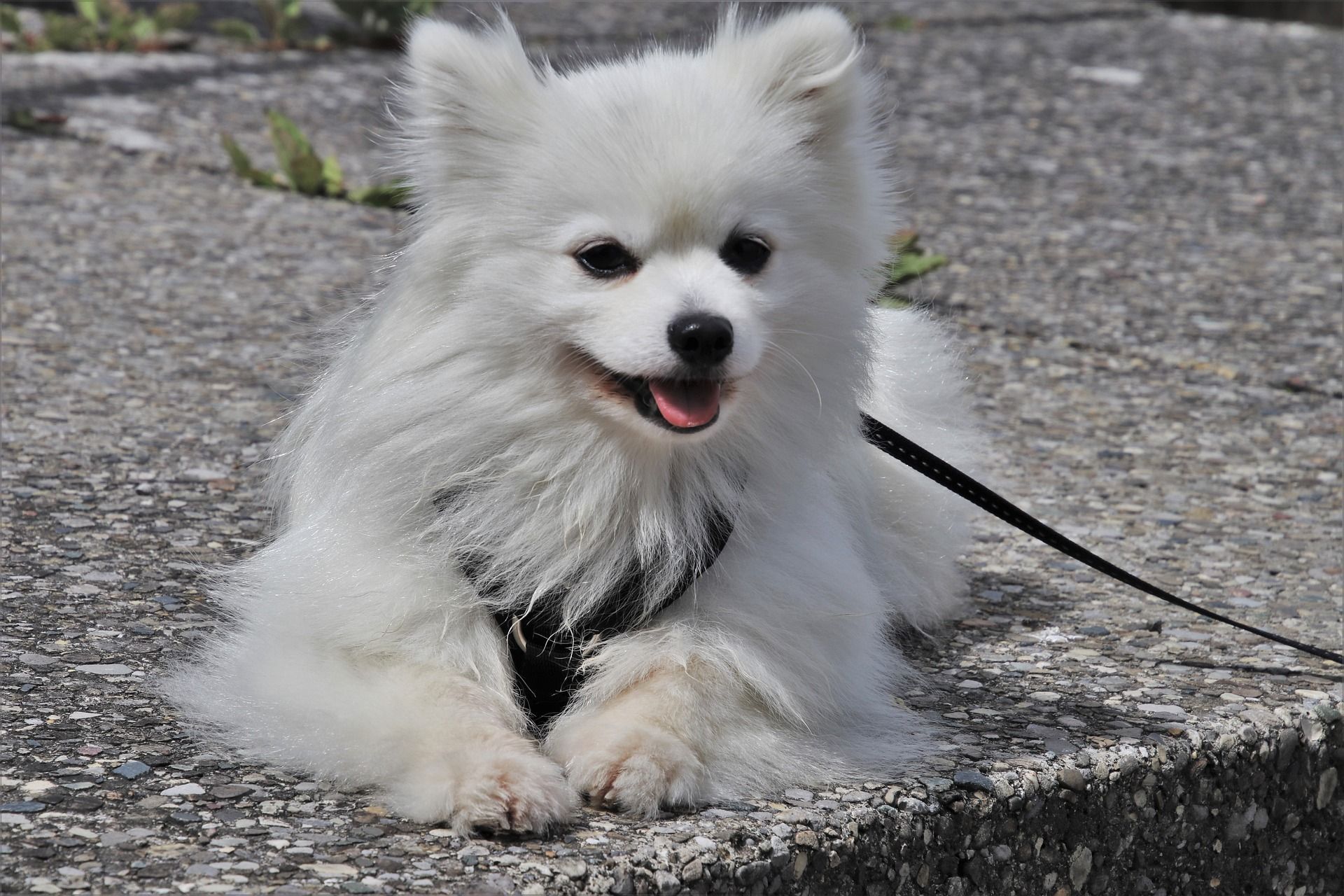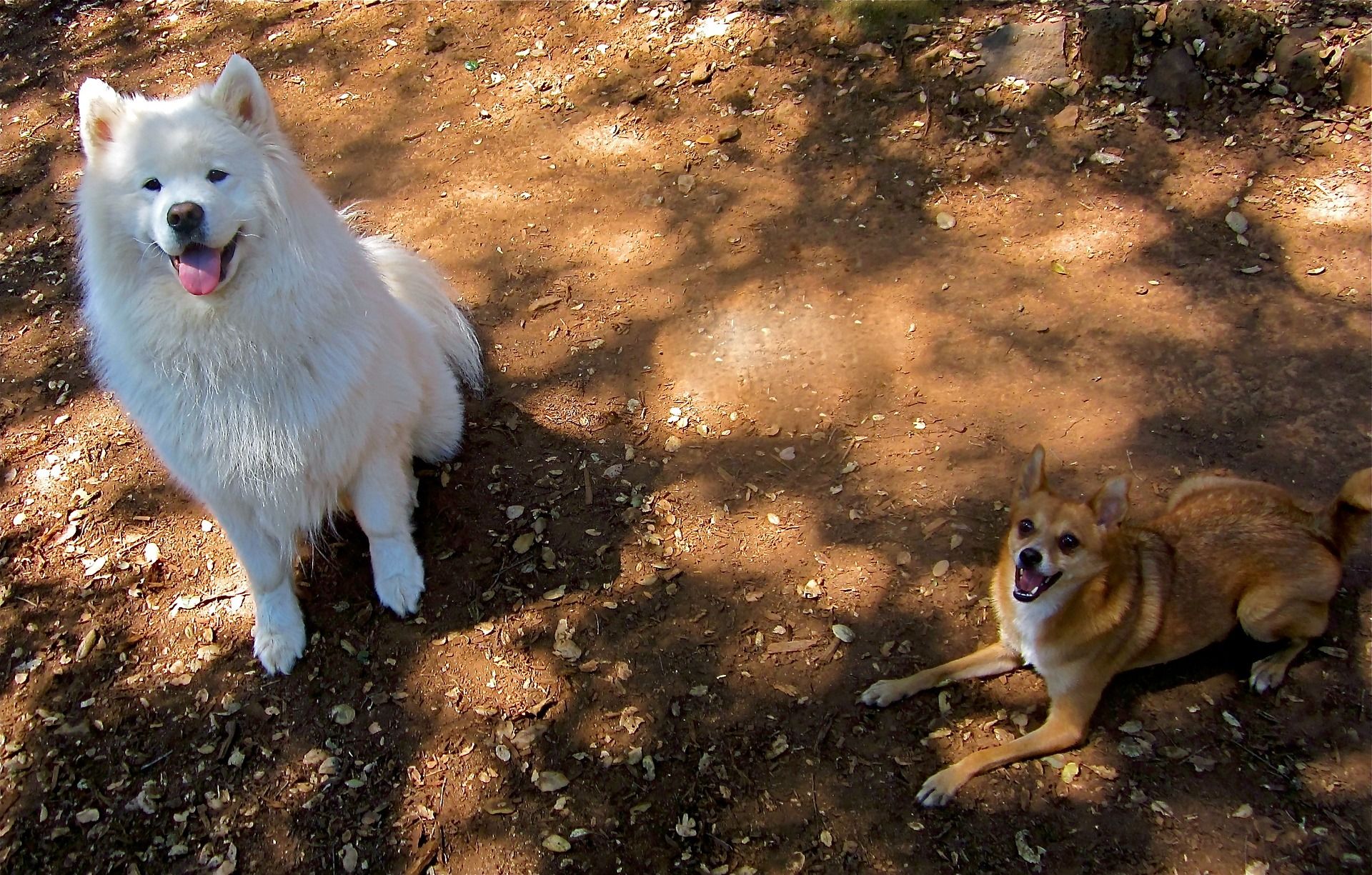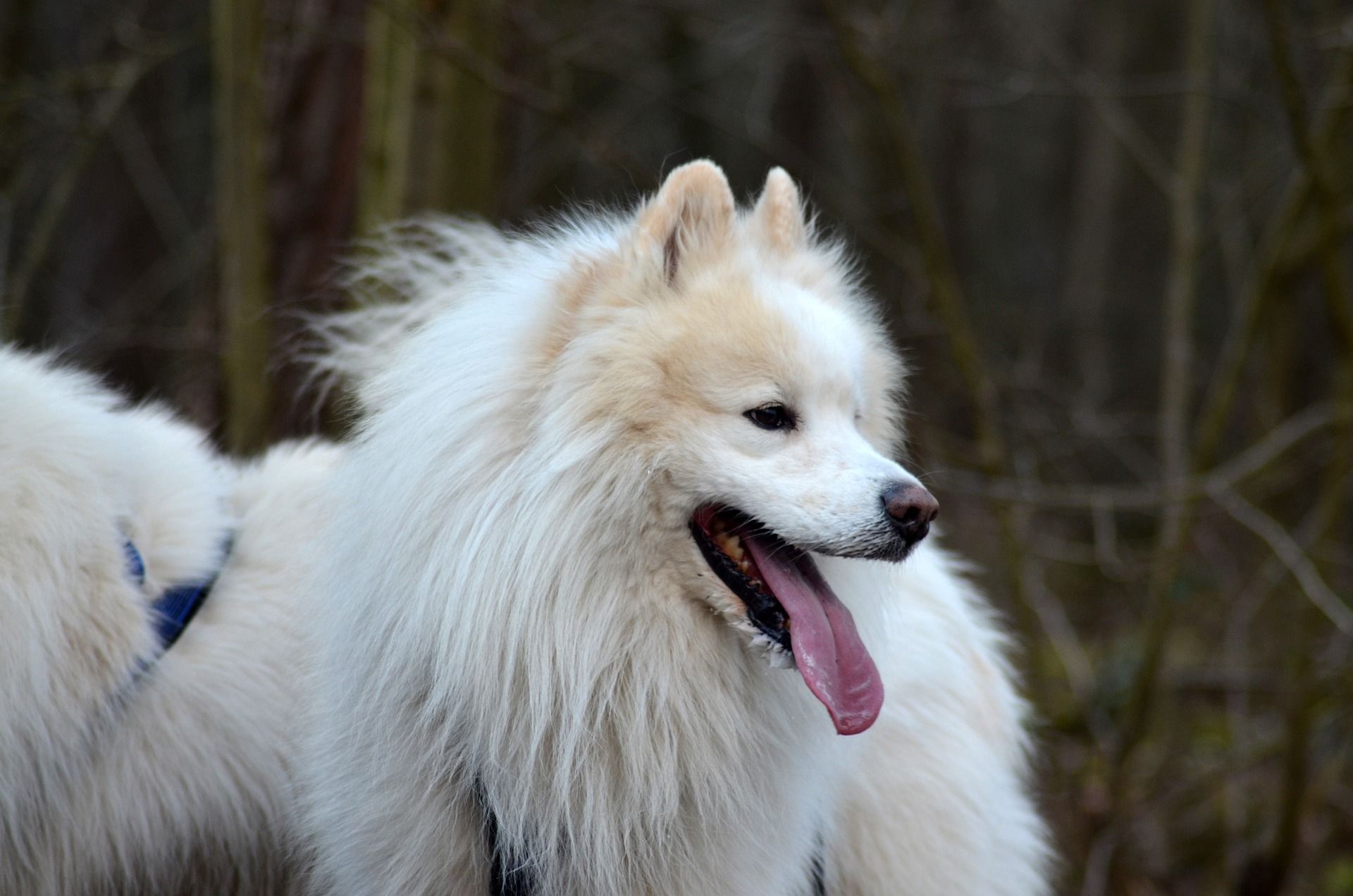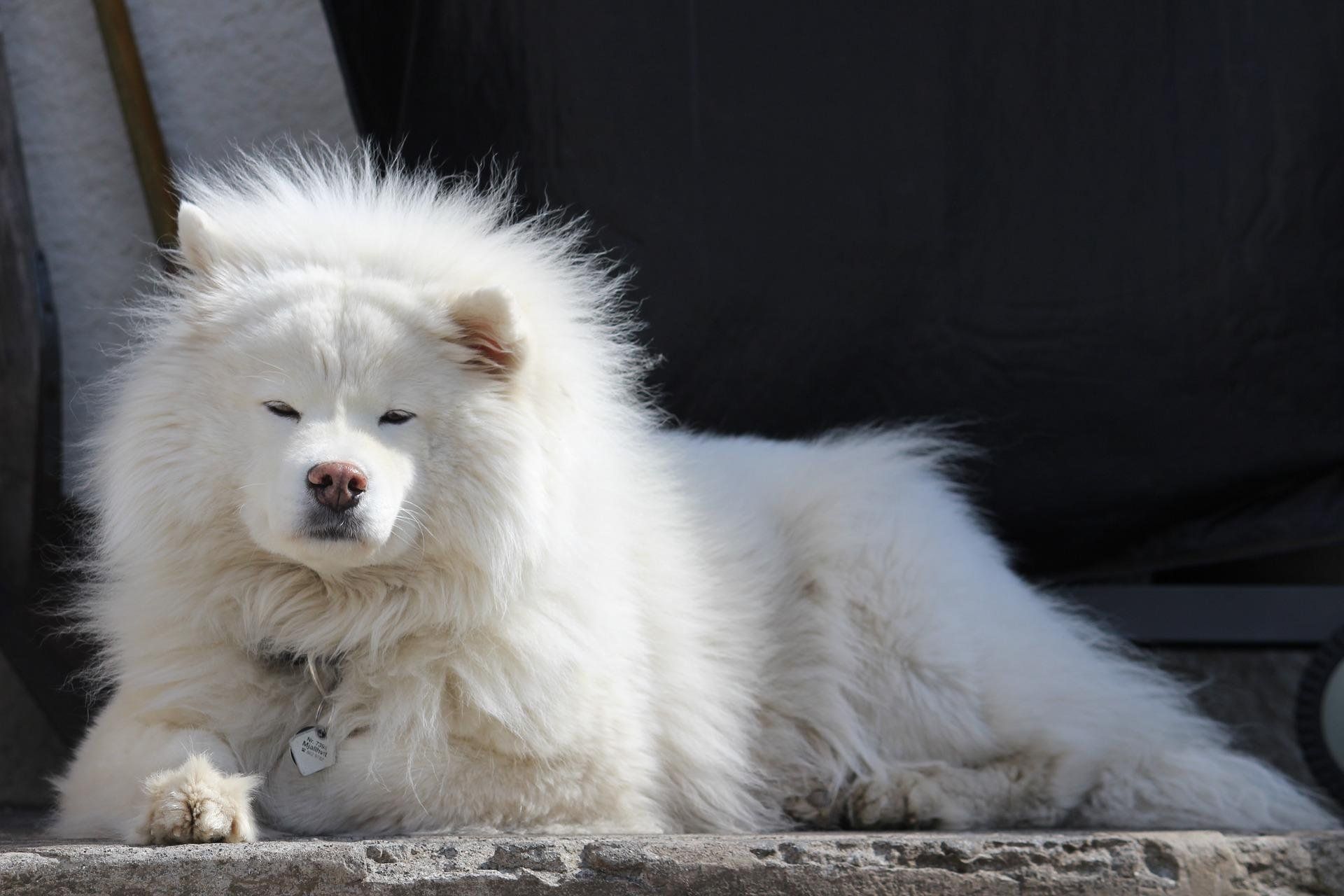The Samoyed has a rich working heritage originating among the Samoyede people of Siberia, who relied on these dogs for various tasks in the harsh Arctics
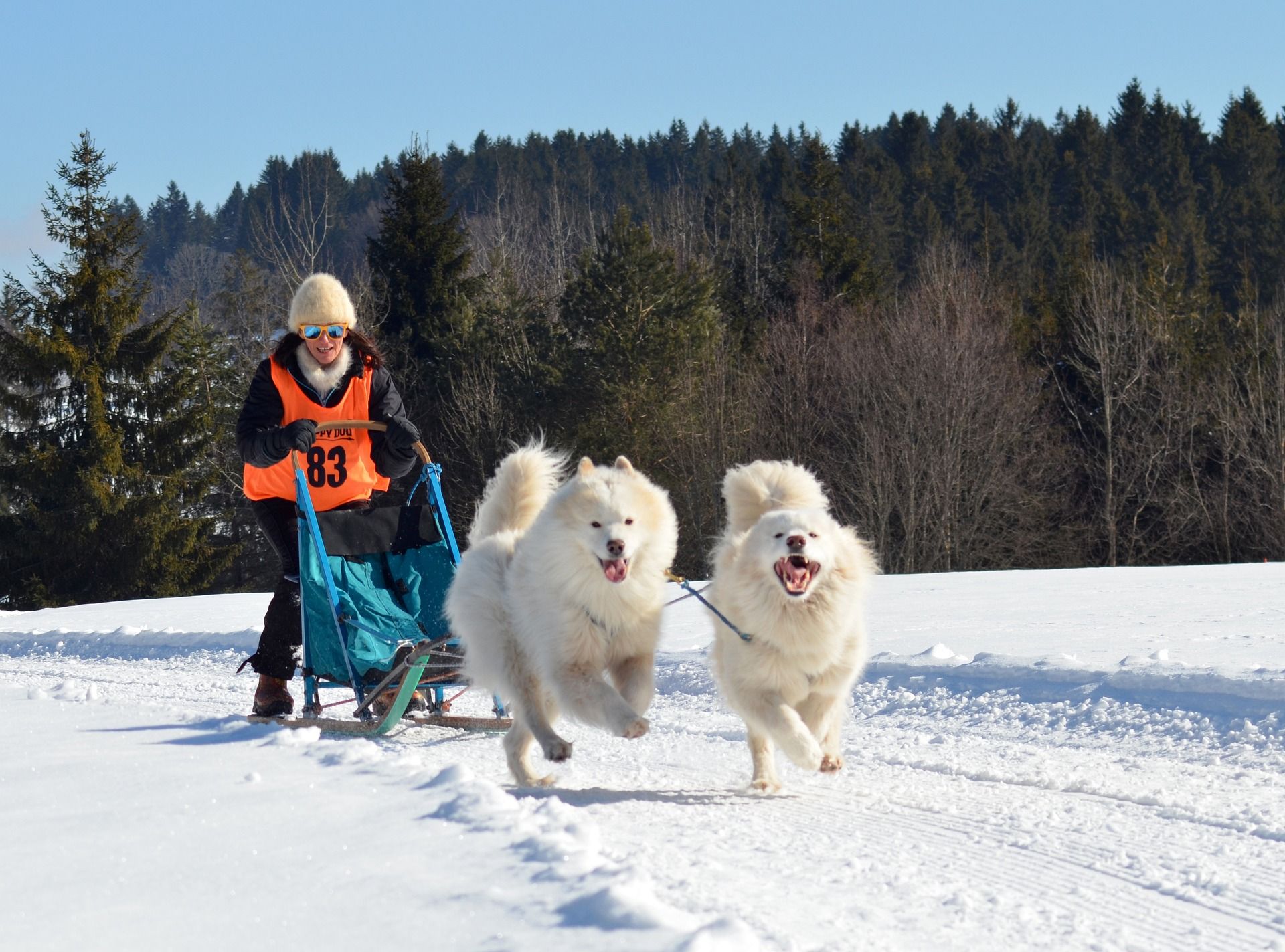
Samoyeds are an active and high-energy breed bred to be working dogs in Siberia. While their high energy levels make them well-suited for active families, it’s important for potential Samoyed owners to be prepared to meet their exercise and mental stimulation needs.
Table of Contents
-
Are Samoyeds Active? Are they High Energy?
- #1 — Working Heritage
- #2 — Strong Stamina
- #3 — Playful Disposition
- #4 — Energetic Puppies
- #5 — Daily Exercise Requirement
- #6 — Mental Stimulation
- #7 — Social Interaction
- #8 — Affectionate Nature
- #9 — Alert and Watchful
- #10 — Adventurous Spirit
- #11 — Independent Thinking
- #12 — Herding Instinct
- #13 — Friendly Demeanor
Are Samoyeds Active? Are they High Energy?
Yes and yes, Samoyeds are an active and high-energy breed.
Historically, they were bred to be working dogs in Siberia, pulling sleds, herding reindeer, and assisting in various tasks. As a result, they have retained a strong need for physical activity and mental stimulation.
Samoyeds are known for their distinctive characteristics, and several traits highlight their activity level and energy. Here are 13 characteristics that showcase the energetic nature of Samoyeds:
#1 — Working Heritage
The Samoyed breed has a rich working heritage that originated among the Samoyede people of Siberia, who relied on these dogs for various tasks in the harsh Arctic conditions. The working heritage of Samoyeds is closely tied to their role as sled dogs, herders, and companions.
The key aspects of their working history include:
- Sled dogs: One of the primary roles of Samoyeds was as sled dogs. They were used by the Samoyede people to pull sleds across the snowy expanses of Siberia. This work involved transporting people, goods, and supplies over long distances in challenging Arctic environments.
- Herding reindeer: Samoyeds were employed as herders of reindeer, another crucial aspect of their working heritage. Their herding instincts and ability to navigate snowy landscapes made them valuable in assisting the Samoyede people with their nomadic lifestyle and reindeer herding.
- Guard dogs: Samoyeds served as guard dogs for the Samoyede people’s camps. Their alert and watchful nature made them effective at warning their human companions of potential threats, including predators or intruders.
- Companionship: Beyond their utilitarian roles, Samoyeds were integral to the daily lives of the Samoyede people as loyal and affectionate companions. Their friendly disposition and willingness to work alongside their human partners forged a deep bond between the dogs and their owners.
- Warmth providers: In the extreme cold of Siberia, Samoyeds were also utilized for providing warmth. They would sleep close to their human family members, sharing body heat and helping to maintain warmth in the frigid temperatures.
- Adaptability to harsh conditions: The Samoyede people relied on Samoyeds due to their adaptability to the harsh Arctic climate. Their thick double coat provided insulation against the cold, and their strong and sturdy build made them well-suited for navigating through snow and ice.
- Endurance and stamina: The ability of Samoyeds to endure long journeys and strenuous activities was a crucial characteristic. Their stamina and strength made them reliable partners in the challenging work required by the Samoyede people.
- Versatility: Samoyeds displayed a remarkable versatility in their roles. Whether pulling sleds, herding reindeer, standing guard, or providing companionship, they demonstrated their capability to adapt to various tasks in the Arctic environment.
- Intelligence and problem-solving: Samoyeds exhibited intelligence and problem-solving skills in their working roles. This intelligence made them trainable for a variety of tasks, and their ability to think independently allowed them to navigate complex situations.
The working heritage of Samoyeds is an integral part of their identity as a breed. While modern Samoyeds may not engage in the same tasks as their ancestors, these historical roles have left an indelible mark on the breed’s characteristics, including their strong work ethic, intelligence, sociability, and adaptability to cold climates.
#2 — Strong Stamina
Samoyeds possess excellent stamina, allowing them to endure strenuous activities for extended periods. This stamina is a result of their historical role as sled dogs in the Arctic.
These dogs were bred to endure the challenging conditions of Siberia and to perform physically demanding tasks such as pulling sleds and covering long distances in the snow.
The strong stamina of Samoyeds is evident in:
- Endurance in harsh conditions: The Arctic climate, with its extreme cold and challenging terrain, necessitated dogs with exceptional endurance. Samoyeds evolved to withstand the cold and maintain their stamina even in adverse weather conditions.
- Adaptation to cold environments: The thick double coat of Samoyeds provides insulation against the cold, allowing them to stay active in freezing temperatures without expending excess energy to maintain body heat.
- Strong muscular build: Samoyeds have a strong and muscular build that supports their endurance. This physical strength is advantageous for pulling heavy loads, and it contributes to their ability to sustain physical activity over extended periods.
- Training for work: The training regimen for sled dogs, including Samoyeds, often involved gradually building their stamina through regular exercise and conditioning. This training contributed to their ability to perform strenuous tasks over long periods.
- Mental toughness: In addition to physical stamina, Samoyeds possess mental toughness. Their ability to stay focused and determined during challenging tasks contributes to their overall endurance.
- Love for physical activity: Samoyeds genuinely enjoy physical activities and play. Their enthusiasm for exercise contributes to their willingness to sustain physical effort for extended durations.
Today, while many Samoyeds may not be engaged in the same types of work for which they were originally bred, their strong stamina remains a characteristic that owners should be aware of.
#3 — Playful Disposition
Samoyeds have a playful and friendly disposition. They often engage in playful behavior, including games of fetch, chasing toys, and interactive play with their owners.
This playful of Samoyeds is one of their endearing and charming qualities. These dogs are known for their friendly and cheerful nature, and their playfulness adds to their appeal as family companions.
Several characteristics highlight the playful disposition of Samoyeds:
- Affectionate play: Samoyeds often express their affection through play. They enjoy engaging in games with their owners, such as fetch, tug-of-war, and interactive play sessions.
- Playful expressions: The facial expressions of Samoyeds often reflect their playful mood. They may have a characteristic “Sammy smile” that showcases their friendly and happy demeanor.
- Interactive toys: Samoyeds appreciate toys that stimulate their minds and provide opportunities for play. Puzzle toys, interactive feeders, and toys that dispense treats can keep them entertained.
- Energetic play style: Samoyeds have an energetic play style that includes bounding, leaping, and even “zoomies” (short bursts of frenetic running). Their playful movements are a reflection of their joy and enthusiasm.
- Friendly wrestling: Samoyeds may engage in friendly wrestling with other dogs or playmates. This behavior is a natural way for them to express their playfulness and build social bonds.
- Playfulness with children: Samoyeds are generally good with children and often display a playful attitude when interacting with them. They may tolerate a certain level of rough play and enjoy the exuberance of children.
- Enthusiastic greetings: When Samoyeds greet their owners or visitors, they often do so with enthusiasm, wagging tails, and sometimes bringing a toy as an offering to engage in play.
- Love for outdoor play: Samoyeds enjoy outdoor play and activities. Whether it’s running in the yard, playing in the snow, or exploring new environments, their playful nature extends to the great outdoors.
- Playful vocalizations: Samoyeds may use vocalizations, including barks, yips, and “talking” sounds, as part of their playfulness. These vocalizations can add an extra layer of communication during play.
It’s important for Samoyed owners to embrace and encourage their dog’s playful nature. Providing a variety of toys, engaging in interactive play, and incorporating playtime into the daily routine are ways to ensure that Samoyeds remain happy, mentally stimulated, and well-balanced.
#4 — Energetic Puppies
Samoyed puppies are particularly known for their high energy levels. They are lively, curious, and playful, requiring ample opportunities for play and exploration.
#5 — Daily Exercise Requirement
Samoyeds have a substantial need for daily exercise. Regular walks, play sessions, and other physical activities are essential to maintain their overall well-being and prevent boredom.
#6 — Mental Stimulation
In addition to physical exercise, Samoyeds require mental stimulation. They are intelligent dogs that benefit from activities that challenge their minds, such as learning new tricks or participating in canine sports.
#7 — Social Interaction
Samoyeds are highly social dogs that thrive on interaction with their human family members. They enjoy being involved in family activities and may become unhappy or anxious if left alone for extended periods.
#8 — Affectionate Nature
While being active, Samoyeds are also affectionate dogs. They often enjoy close contact with their owners and family members, seeking attention and physical affection.
#9 — Alert and Watchful
Samoyeds are naturally alert and watchful, which contributes to their role as excellent watchdogs. Their alertness may result in barking to alert their owners of potential intruders or changes in the environment.
#10 — Adventurous Spirit
Samoyeds have an adventurous spirit and are often up for new experiences. They may enjoy outdoor activities such as hiking, camping, and exploring new environments with their owners.
#11 — Independent Thinking
While being affectionate, Samoyeds also have a bit of independent thinking. This characteristic can make training a bit challenging but adds to their unique personality.
#12 — Herding Instinct
Samoyeds may exhibit herding instincts, a trait inherited from their historical role in herding reindeer. This can be observed in their behavior, especially in households with other pets.
#13 — Friendly Demeanor
Despite their high energy levels, Samoyeds typically maintain a friendly and approachable demeanor. They are known for their sociability and tend to get along well with people and other animals.
Wrapping Up
These characteristics are crucial for prospective Samoyed owners.
While their high energy levels make them well-suited for active families, it’s important for potential Samoyed owners to be prepared to meet their exercise and mental stimulation needs.
Providing them with the physical and mental stimulation they need helps ensure a happy and well-adjusted pet.
Regular walks, play sessions, and engaging activities are essential to prevent boredom and ensure a well-behaved and happy Samoyed. Lack of exercise can lead to behavioral problems, so it’s crucial to provide an outlet for their energy in a positive way. Regular exercise, training, and social interaction contribute to a positive relationship with this energetic and lovable breed.
